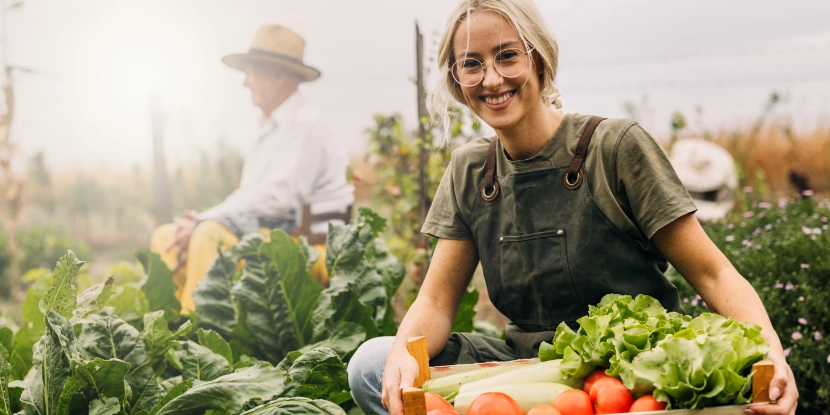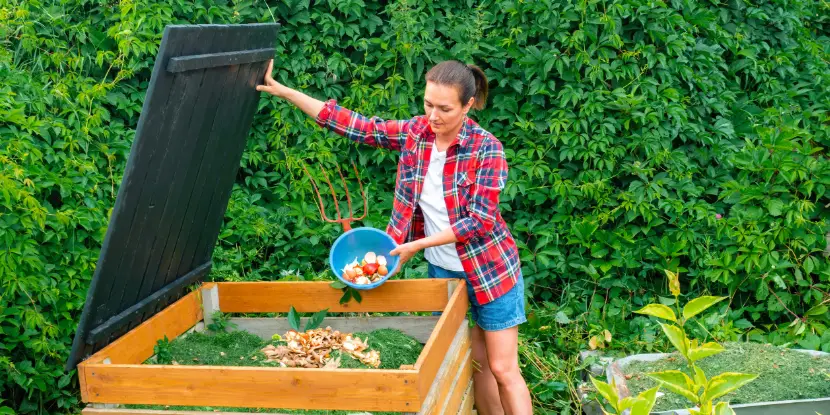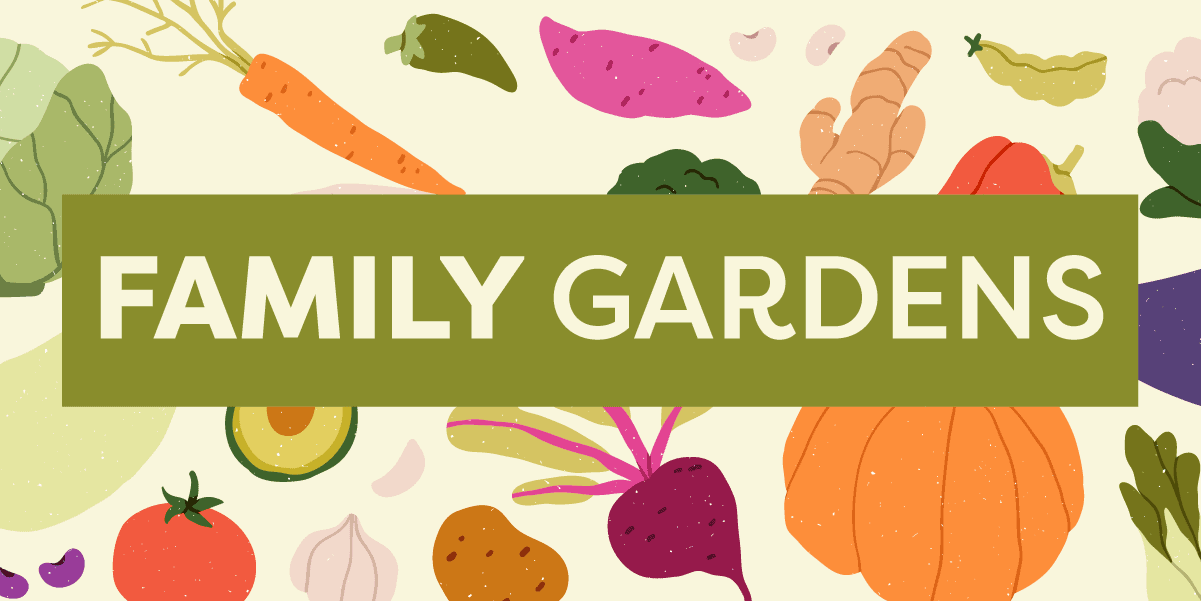Are you planning a garden to feed your family? To beautify your landscape?
Before you start, take an inventory of your situation. Are you prepared to make the investment?
What investment, you may wonder?
- Time to care for the family garden
- The cost of building a family garden
- The space required for a family garden
- The knowledge and skills needed for successful gardening
When planning a new flower or vegetable garden, your family should be realistic about the time and cost for preparation, planting, maintenance, harvesting, and removal of residue. The suggested size for a family flower or vegetable garden is 100 to 400 square feet. You can increase or decrease it later, as needed.
The first and most useful hand tool should be a garden fork for digging, tilling, or cultivating. A mini-tiller may be helpful for larger areas up to 1,000 square feet.
Most family gardens should be narrow enough to reach the center from each side. Gardens with long rows are for commercial producers.
Crops planted in raised beds will yield more than those in ground-level plots.
You can raise a bed by cutting grass low, covering the area with several sheets of wet-white old newspaper or cardboard, and topping it off with 6 to 12 inches of fertile topsoil or bed mix.
- The garden will retain its original size and shape if you build a frame.
- If you don’t frame your garden, the topsoil must be re-graded each season.
- If you neglect the garden, the raised bed may become a berm in the landscape.
You can plant the smallest gardens in containers. If properly managed, the plants should be the most productive.
Be sure to plant the adapted varieties of your preferred vegetables and flowers.
- Plants can be set in a checkerboard pattern instead of close in a row with a wide space between rows.
- You should consider the root system’s spread and the mature plants’ size.
One autumn, I set my cabbage plants nine inches apart and broccoli six inches apart. They shaded the soil after becoming about half mature, discouraging weeds. The plants grew together, and the heads were of average size. I may set them the same distance apart this fall — 12 and 9 inches, respectively.

A gardener holds a bounty of fresh vegetables from the family garden.
Tomatoes
If tomato plants are transplanted to larger containers several times for a week or two, they should grow more roots. If two tomato plants are set in the same hole or trench, they should mature and develop fruit earlier than they would individually.
You should set the plants in a deep hole or a trench (3 to 6 inches deep), with only the top cluster of leaves showing. That will force them to grow more roots along the stem and become a more robust plant.
Apply deep mulch around the tomato plants in a one or two-foot radius. This is the season to apply starter water-soluble fertilizer with calcium to prevent blossom-end rot as the fruit matures.
Composting
The “dog days” of summer may return.
If you have a shady area, it’s an excellent time to build a compost structure. It should contain one cubic yard or more to develop heat and speed decomposition. Or you can pile grass clippings, leaves, kitchen vegetable scraps, and other yard residue to decompose.

Emptying food scraps into a composting structure.
Leaves decompose faster if shredded with a lawn mower or shredder machine. Compost has fertility value determined by the organic materials in it. Some leaves may be better than cow manure.
Lawn-grass clippings have mineral elements based on the soil fertility and the grass stage when mowed.
FAQs: Building a Family Garden
Q: How much time should I expect to spend on caring for a family garden?
Depending on the size of your garden and the types of plants you have, you can estimate anywhere from 1 to 3 hours per week. This includes preparation, planting, maintenance, and harvesting.
Q: What are some important things to consider when choosing vegetables and flowers to plant?
Consider the climate and weather patterns in your area, as well as the amount of sunlight and soil conditions. For best results, choose varieties that are adapted to your region.
Q: Can I build a family garden without investing a lot of money?
You can start small and gradually expand your garden as you see fit. You can also create raised beds for minimal cost using household items like cardboard.
Q: Is it possible to have a productive family garden in containers?
Absolutely! Just make sure to regularly water and fertilize plants. Also, choose smaller varieties of plants suitable for container gardening.
Q: How do I deal with pests and insects in my garden?
Integrated pest management (IPM) is a great approach, combining biological, cultural, physical, and chemical tools to manage pests. You can attract beneficial insects like ladybugs that prey on pests, use natural deterrents like neem oil, or install physical barriers like nets and fences.
Q: What are some common mistakes new gardeners make?
Common mistakes include overwatering, planting too closely, neglecting soil health, and choosing plants not suited to the local climate. Research and planning can help you avoid these pitfalls.
Q: How often should I water my garden?
The frequency of watering depends on your plants and soil type, but a general rule of thumb is to provide about 1 inch of water per week. In hot or dry weather, you may need to water more frequently.
Q: What are some easy-to-grow vegetables for beginners?
Easy-to-grow vegetables include lettuce, radishes, green beans, and tomatoes. These plants require minimal maintenance and adapt well to various growing conditions, making them ideal for novice gardeners.

